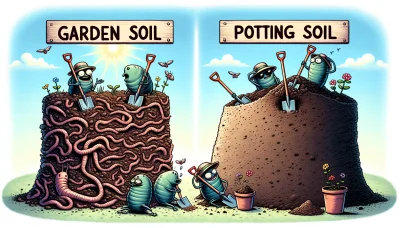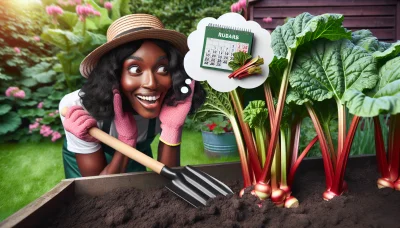Persimmon skin Quiz
Test Your Knowledge
Question of
The Wonders of Persimmon Skin: An Introduction
Persimmon skin, often overlooked, holds a treasure trove of benefits for gardening enthusiasts. This natural byproduct, rich in nutrients, can be a sustainable and cost-effective amendment for garden soils. Its composition includes essential minerals and fibers that can help improve soil structure, enhance water retention, and provide a slow-release source of nutrients to plants. Incorporating persimmon skin into compost or directly into the soil not only recycles organic waste but also promotes a healthier, more vibrant garden ecosystem.
Types of Persimmons and Their Skins
- Fuyu: This persimmon variety has a squat, round shape similar to that of a tomato. Its skin is thin, smooth, and orange, which is edible and does not need to be peeled before eating.
- Hachiya: Hachiya persimmons are acorn-shaped with a glossy, deep orange skin. The skin is a bit thicker than that of the Fuyu and can be slightly astringent if the fruit is not fully ripe.
- Chocolate Persimmon: Known for its brownish flesh, the skin of the Chocolate persimmon is thin, dark orange, and edible, much like the Fuyu, but with a slightly different texture.
- Tanenashi: This variety is cone-shaped and has a smooth, bright orange skin that is thin and delicate. It is often consumed when fully ripe and soft, and the skin can easily be eaten.
Benefits of Persimmon Skin in Gardening
Persimmon skin is a valuable addition to any garden, offering a range of benefits for soil health and plant growth. Rich in nutrients, the skin of persimmons can help to enrich the soil, providing essential minerals and vitamins that plants need to thrive. When added to compost or directly to the garden bed, persimmon skins break down and release nitrogen, potassium, and phosphorus, all vital for healthy plant development. Moreover, as the skin decomposes, it helps to improve soil texture, increasing aeration and water retention, which can be particularly beneficial in areas with poor soil quality. Utilizing persimmon skin in gardening not only contributes to a more nutrient-rich and vibrant garden but also promotes sustainable waste management practices by repurposing organic waste.
How to Use Persimmon Skin in Your Garden
- Composting: Add persimmon skins to your compost pile. They break down well and add valuable nutrients back into the soil.
- Mulching: Dry out persimmon skins and then crush them into small pieces. Use these pieces as a natural mulch around plants to retain moisture and deter weeds.
- Pest Repellent: Blend persimmon skins with water to create a natural pest repellent. Spray this mixture around the garden to keep pests at bay without using harmful chemicals.
- Soil Amendment: Chop up persimmon skins and mix them directly into the soil. As they decompose, they will enrich the soil with organic matter, improving soil health and structure.
- Seed Starting Pots: Use half shells of persimmon skins as biodegradable pots for starting seeds. Once the seedlings are ready to be transplanted, plant them directly into the garden, persimmon skin and all.
Common Myths About Persimmon Skin
Many people believe that the skin of persimmons is not useful in gardening, thinking it may be harmful to plants or soil. However, this is a misconception. In reality, persimmon skin can be a beneficial addition to compost piles. As it decomposes, it adds essential nutrients back into the soil, promoting healthier plant growth. Furthermore, there's no evidence to suggest that persimmon skin is toxic or harmful to garden plants. Instead, it can help improve soil texture and fertility, making it a valuable resource for gardeners looking to enhance their garden's health naturally.
Harvesting and Preparing Persimmon Skin
- Select the Right Persimmons: Choose fully ripe persimmons for harvesting as they contain the highest level of nutrients beneficial for gardening purposes.
- Harvesting: Gently twist the persimmons off the tree to avoid damaging the fruit or the tree. Use pruning shears for stubborn stems.
- Cleaning: Wash the persimmons thoroughly under running water to remove any dirt or residues. This step is crucial for preparing the skin for use in gardening.
- Peeling: Once cleaned, peel the skin off the persimmons carefully. Try to keep the peels as intact as possible for easy use in gardening.
- Drying the Skins: Lay out the persimmon skins on a clean surface under direct sunlight or in a dehydrator until they are completely dry. This may take a few days depending on the method and climate.
- Preparing for Garden Use: Once dried, crush or cut the persimmon skins into smaller pieces. This increases the surface area, making it easier for the nutrients to be absorbed into the soil.
- Storage: Store the prepared persimmon skins in a dry, airtight container. Keep it in a cool, dark place to preserve its quality until ready for use in your garden.
FAQs on Persimmon Skin in Gardening
| Question | Answer |
|---|---|
| Can persimmon skin be used as a fertilizer in gardening? | Yes, persimmon skin can be composted and used as a natural fertilizer, as it is rich in nutrients beneficial for soil health. |
| How do I prepare persimmon skin for composting? | Chop the skin into smaller pieces to speed up the composting process and mix it into your compost bin with other green and brown materials. |
| Is persimmon skin safe for all plants? | Generally, yes, but it is recommended to use the composted form to avoid any potential issues with direct application on sensitive plants. |
| Can the use of persimmon skin deter pests in the garden? | While not a proven pest deterrent, the nutrients from composted persimmon skin can help strengthen plants against pests and diseases. |
| How long does it take for persimmon skin to decompose in compost? | It can take a few months to fully decompose, depending on the composting conditions and the size of the skin pieces. |












